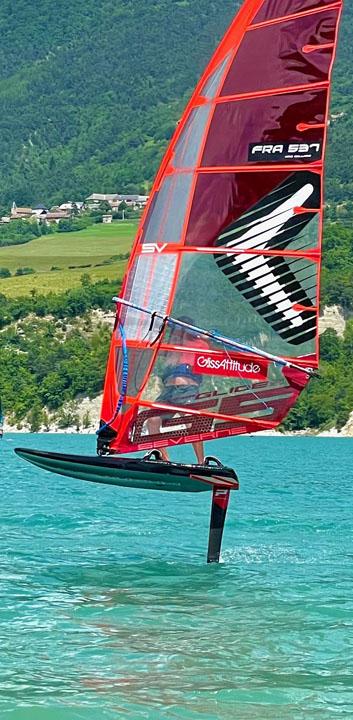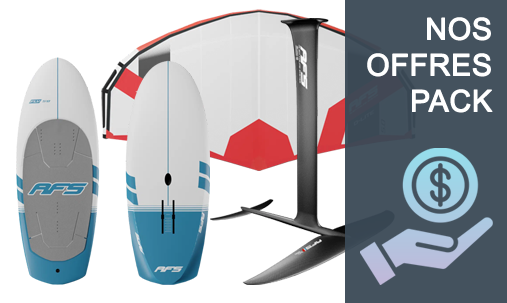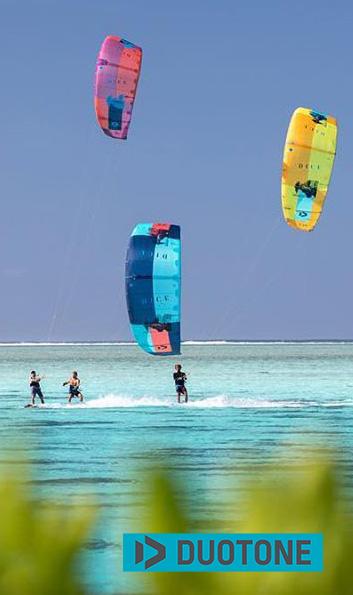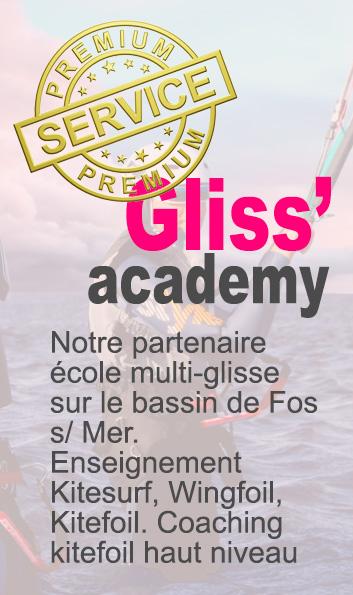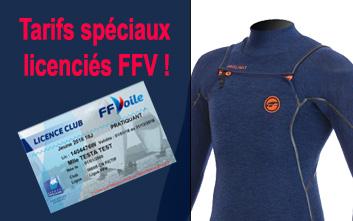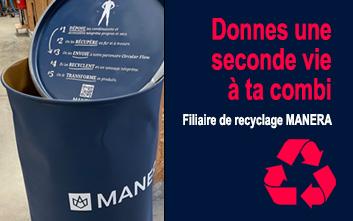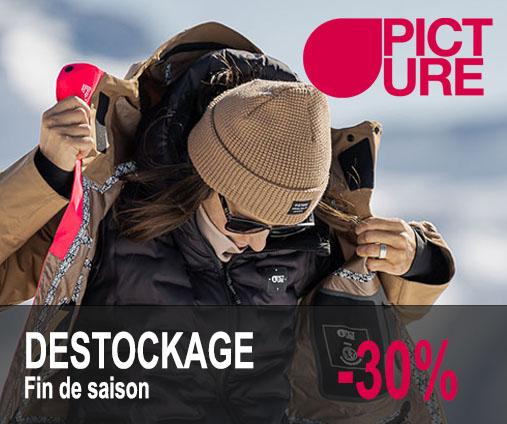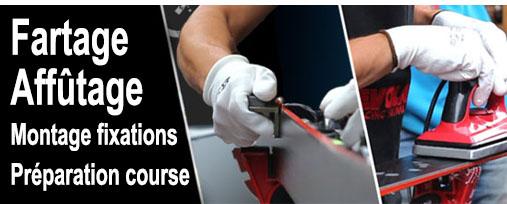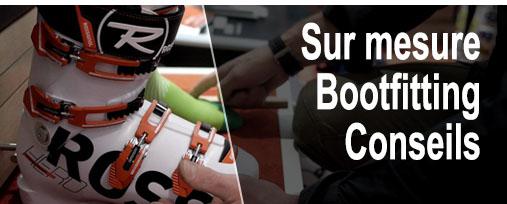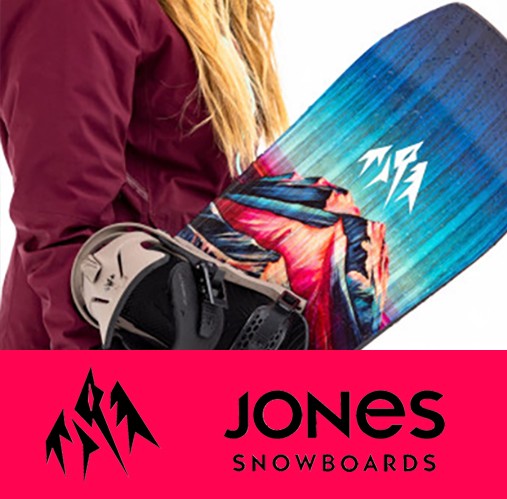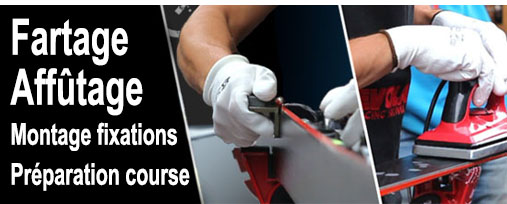UN NOUVEAU STEP
Le Windsurf a eu plusieurs phases
> La bulle : années 70 à 90 avec un sport mode et grand public, en forte croissance, générant beaucoup de revenus. Les 20 Glorieuses
> La spécialisation : années 90-2000. Forte réduction de la demande, clientèle ultra spécialisée mais captive
> L'ouverture du marché Internet : année 2000-2015. Logique de discount, volume, ventes sans frontière, explosion des petites marques, économie du moins disant, baisse des revenus pour tous car marché trop petit pour assumer cette logique à long terme
> Nouveau step à inventer : créer un business modèle rentable pour tous les acteurs (quitte à en supprimer), intégrant la logique des nouveau médias et d'un marché sans frontière. Pour moi, c'est le travail et l'urgence des managers (marques, shops etc.) ... et non décider de la couleur du modèle 2020.
MARKET DRIVEN DEVELOPPMENT
Revenir aux fondamentaux de l'acte d'achat et sortir des acquis stupides qui datent de l'âge d'or (un nouveauté par an, même si il n'y a aucun progrès et si ça ne se vend pas).
- Donner envie (innovation, projection du pratiquant, ciblage)
- Permettre d'acheter (disponibilité, tarif réaliste, rapport Q/P)
La brique fondamentale est le ciblage : définition des priorités et des budgets de développement et des cahiers des charges précis en fonction des marchés. Il doit se faire AVANT le lancement de tout projet, en collaboration avec le terrain (revendeurs). Cela évitera les erreurs (exemple : Foil carbone 2019, Glide, X séries).
Le développement des produits coureurs ne doit plus être la base du travail. Ceci doit être considéré come un budget R&D (et non promotion > commercial) et respecter un ratio pertinent, sachant que la R&D doit aussi et surtout inclure en priorité la rechercher de nouveaux supports N 3 et plus.
Cette logique doit aboutir à
- des produits plus cohérents avec le marché
- moins d'argent gaspillé sur les coureurs et la R&D qui va avec (cela fait 15 ans que NP soutient AA, et les ventes n'ont jamais été aussi faibles)
- plus d'innovations à vocation commerciales
- moins de temps passé à créer des références qui n'apportent rien
Renforcer le marketing opérationnel : veille permanente sur les incitations à l'achat (évènements, déclencheurs), intégration du marketing dès la conception du produit (démonstrateurs, triggers).
Revoir absolument le règne des coureurs enfants gâtés. Le temps des surfeurs blonds qui se la coule douce toute l'année au frais des marques est derrière nous ! Les clients ne veulent et ne peuvent plus payer ceci.
Ne plus payer les coureurs en matériel : Cf F1, tennis, skis : matériel détruit pour ne pas être revendu.
Soit le CA est significatif pour la marque , et il détruit le marché, soit il est petit , et son pouvoir de nuisance est supérieur au gain. Dans tous les cas, il est inacceptable pour les shops d'être en concurrence avec leur fournisseurs. Toute la logique est à revoir, d'autant que la PWA n'est plus une image pour les acheteurs .. le lien se distend un peu plus tous les jours car on s'est trop éloigné de la pratique de tous les jours (cf AA qui râle car il n'est pas reconu) ! Aujourd'hui, le ROI n'est plus là pour l'argent investi. Si ils veulent continuer, qu'ils le fassent à leurs frais, ça va les obliger à travailler !
La plupart des petites marques pensent qu'elles peinent à progresser car elles n'ont pas quelqu'un dans le top 10. C'est une erreur car le très haut niveau n'est plus couvert par les médias, et l'argent investi dans d'autres moyens de marketing serait plus efficace ... mais il faut investir quand même. C'est le calcul qui n'est pas bon, donner du matos, cde n'est pas gratuit: ça coute toute la marge non réalisée par l'ensemble de la chaine.
Sujet à aborder
Pourquoi cette réunion : on a besoin de NP en face de B&M
Constat actuel
Qu'est ce qui fait qu'un magasin va commander du NP ?
> produits qui se vendent (et ne restent donc pas en stock) : tarif et demande (produit désirable)
> rentable (marge , frais de port, risque de stock)
> relation commerciale : SAV, logistique (réactivité et gestion des reliquat, groupage) , réponse (réactivité , pertinence, responsabilité, qualité de l'information , implication et sérieux )
Structuration management
Cost Killer
Responsable Marché (études de marché et gammes) : responsable des designers et collaborations externe pour le développement
Responsable Communication (courreurs, lop, médias, test, marketing, formation , présentation produit, réseaux sociaux) : la façon de présenter les choses est ultra importante
Responsable production / logistique par zone euro.. asie..US / approvisionnement
Service commercial : compta générale, service commercial pour chaque pays
Gammes produit
Réduction des gammes (flotteurs , néo) ... les magasins ont plus besoin de gammes lisibles que exhaustives car aucun magasin 100% mono-marque
Cycle de vie produit adapté au marché > Voiles Gammes
Mats univers curve : cela fait des années que NP se met des bâtons dans les roues
Business modèle et évolution
Adapter le modèle à l'arrivée des moyens de communication et du marché étendu
Commission / Affiliation, Online sales
Ne plus laisser le distributeur faire la marge en europe (taxes). Impossible d'accepter que le distributeur qui fait partie de la marque négocie les prix pour pouvoir faire du discount !
Promotion
(Lop, medias, réseaux sociaux, place des shops)
Commercial france
Groupage , taux de réponse.
REAFFECTATION DES LOGIQUES DE PRODUCTION
Rationalisation des outils de production. Faire preuve de réalisme et abandoner les outils de production non rentables (mats, voiles etc.)
Affecter des moyens de production en cohérence avec le volume. développer une filière semi-custom pour le produit à très faible volume, à défaut de les arrêter. Ne pas regarder que le coût à l'unité, mais aussi le cout engendré par la désorganisation de la production de volume, les retards, les mauvais stocks générés etc. facture le cout supplémentaire au client (la rareté se paye, d'autant plus si il n'y a pas de stock donc de discount)
NEW BUSINESS MODEL
Réduire le cout de la distribution !
- réduire la marge des sociétés de distribution (ou filiales) pour offrir des prix plus réalistes
- marges retailer plus basses en échange conseil pur
- logistique directe marque
- augmenter le cycle d'existence des produits
Lettre à Christophe
As discussed for some time with M-O leconte, we share the same observation about the windsurf market.
Form a very general point of view,
- we have a mismatch between the size of the market and the overall production
- we pay to offer products and services which gives desire to the customer
In the specific case of Neilpryde, the cost of the structure (size of teams, production facilities, functional structure) is no more adapted to the actual market. This lead to inappropriate price template regarding offered products and services, and so loss of market share compared to Boards & More (that compensates thanks to his leadership on the kite surf area) and Knut Watersports (that has a very light structure). This also leaves opportunities to a lot of newcomers like Loft/Patrick, Sailloft, Challenger, Avanti, etc.
The market absolutely need a strong competitor against Boards & More to restore a more healthy situation. On your side, this need to go trough
- a smart downsize of the company : less expenses, more profit
- focusing on what makes money
- optimization of profitability … starting from product design and market analysis
I know that all these subjects are of course already on the table but be assured that we can participate if necessary .
There are al lot of subjects that can be discussed, and we had already a lot of very constructive exchanges with Marc-Olivier.
lets talk here about sails On the sail side (which is part of your core business). Iit’s obvious that your own production facilities is a big part of the problem, because you can’t downsize it easily, and it’s cost is too important to be attractive for other brands production.
If we dream about a better world (which is always a very fun exercice), here is how the sail market by NeilPryde should looks like, from our retailer point of view, in terms of products range / product availability / product release / retail pricing / quantities etc
We have roughly 2 type of customers
1 - addicted customers
2 - recreational customers
The 1rst category is looking for news, technical things, even if it’s costly (obviously he always try to pay less, but will purchase whatever would be the situation)
The 2nd category is looking for stability in the products (because it is not aware of last changes), nice prices, easy to use products (and not especially entry level product)
The main error is thinking that 2nd category only needs beginner products
In the First category, every customer has a pretty high level because it is training a lot. You will find a large amount of slalomers and wave-riders, some freestylers and now some foilers.
In the second category, customers are looking for versatility because they adapt to the conditions the find when they go windsurfing
If you keep that as a target, and thing about optimizing production, design, industrialisation and marketing efficiency, there is what kind of range we may have
PRO RANGE : SHORT LIFECYCLE PRODUCTS
—————-
Products updated as soon as you find a consistant technical advancement, at least once a year.
Production in limited quantity, organizing a shortage of at least 10% regarding forecasts. The target os to be Out Of Stock 3 to 4 month after introduction. Production made in current NeilPryde facility, downgraded with keeping best persons.
Prices should be high, with confortable benefits for NeilPryde
Marketing mainly based on social network and web (spare money on paper magazines, physical documentation, test products etc.)
* COMBAT Pro (hardcore wave) - September release
* RS RACING Pro (racing) - Feb release
* WIZZARD Pro (freestyle) - April release
* FLIGHT Pro (Racing Foil) - June release
SPORT RANGE : LONG LIFECYCLE PRODUCTS
—————————————
Stable products updated every 3 seasons. No change between (no new color, no discount).
Development based on reliability, cost production, friendliness
Production in large quantity by cost effective facility. The target is to be out of stock 2 or 3 years after introduction. New product release triggered by stock shortage
Prices should be low, with reasonable benefits (less than with pro range) for every actor (shop, distributor, brand)
Marketing mainly based on stable media (Corporate website, paper magazine and docs, test centers etc.)
Retail price target
- COMBAT < 499eur to 4.7
- RYDE and V8 < 550eur to 7.0
* COMBAT (everybody versatile free-wave sail) … less sizes, evolutive program from hardcore wave in small sizes (Simplified combat design 3.3 HD, 3.7 HD, 4.2 HD), EuroWave program in medium size (Simplified atlas design 4.7 HD, 5.3), Freemove program in big sizes (Simplified fusion design 5.8, 6.2)
* RYDE (NoCam flat water freeride sail) … program between fusion and speedster (like loft oxygen or Xo Vega), mainly small sizes : 4.5, 5.0, 5.5, 6.0, 6.5, 7.0, 7.5
* V8 (2Cam freeride / foil sail) … the current V8 is perfect but needs to be simplified (colors, reinforcements, design) to be more cost effective. Sizes : 5.0, 6.0, 7.0, 8.0, 9.0
This may save money is several aspects
- smaller production facility, more flexible
- design optimized form less production costs … especially in SPORT RANGE
- smaller design cost (less sails, less sizes, less changes). Designer extra time transfered on innovation projects (next products, next trends)
- same marketing, but more focused on real innovations. Using more InShop marketing for SPORT RANGE like test centers etc.
If we stay on sail area, we should develop new profitable services also : chargeable extended warranty, inHouse reparation (official material and workforce), product insurance, long-term leasing etc.
By going on other subjects, we obviously need to dramatically improve the commercial structure for europe, with a dedicated salesforce for each country. The german way of purchasing is far away from the one of italian, french, spanish customers. Each country should have his own salesforce and management, with a commun european logistic center. The current situation where germans decide for others and negociate every product with the brand for all euro countries is no more possible.
We should have 3 logistics center worldwide, owned and managed by the headquarters (euro, US, pacific & Asia). They should also manage the accounting for their regional area. Beside that, we need one small and agile commercial structure for each country (size depending on the market. For France, 3 to 4 pers should be enough).
We could discuss also about business model that should be upgraded since we are still using the same than we had before Internet and new communications canals, etc.
I’m really excited in exchanging more about all what can be done to improve the leadership of brands like NeilPryde. We really needs suppliers that are strong and close to the market, and we are fully ready to collaborate on business project.
CR rendez vous Barcelone Avril 2018
| GAMME VOILE | Obectif = simpicité et lisibilité | |||||||
| Série | Nom | Durée de vie | Date d'intro | Construction | Programme | Target | Tailles | Comportement |
| WORLD CUP SERIES | ||||||||
| COMBAT PRO | 1A | Sept | No HD | World Cup Wave | Elite / Compétiteur | |||
| FLY PRO | 1A | Sept | No HD | Down the line Wave | Elite / Compétiteur | |||
| WIZZARD PRO | 1A | Janv | No HD | Freestyle | Elite / Compétiteur | |||
| RS RACING PRO | 1A | Fev | No HD | Pure Racing | Elite / Compétiteur | |||
| Note : plus de voiles HD dans la série WC … cible client changeant souvent, privilégie légèreté et nervosité, Mat 100% NP | ||||||||
| CORE SERIES | ||||||||
| SPEEDSTER | 2A | Mars | No HD | NO CAM POWER FREERACE | Amateur free-race | 6.2 6.7 / 7.2 / 7.7 | comme oxygen = entre freeride et freerace | |
| V8 | 2A | Mars | No HD | 2 CAM SUPERLIGHT FREERIDE | freeride / foil light wind | 6.2 6.7 / 7.2 / 7.7 / 8.6 | ||
| SKYRIDE | 3A | Avril | HD | FREEMOVE HD | freemove / foil vent soutenu | 4.5 / 4.9 / 5.3 / 5.8 / 6.2 / 6.7 | Wish long , très progressif , pas trop de main arrière. Freemove de 4.5 à 5.3, Freeride de 5.8 à 6.7 | |
| COMBAT | 3A | Sept | HD | WAVE HD | Amateur vague | 3.7 / 4 / 4.2 / 4.5 / 4.7 / 5 / 5.4 | combat jusqu'à 5M et atlas jusqu'à 5.8 | |
| Note : Skiride et Curve en HD uniquement … voile robuste et difféernte des WC séries, Mast universal curve | ||||||||
| Objectif : | ||||||||
| Les WC séries sont des séries limitées , avec pour objectif une rupture de stock à M 5 | ||||||||
| Les CORE doivent constituer au moins 60% des ventes sans discount … donc durée de vie produit ralongée | ||||||||
Windfoil market
Hello Martin, Marc-Olivier, Patrick, Robert
I am contacting you today as the head of a leading company in the windsurf market. I’m managing a very small company regarding yours, but I believe that the future of windsurf market is closely linked with our ability to prepare the next years by establishing a relevant collaboration between retail / suppliers / media … far depper than just a client / supplier relation as it is today.
Of course, you may consider that I’m dreaming at a Disney like world, or that thinks have no chance to move. You are probably right because our ecosystem is very conservative, but I’m pretty optimistic on my side. The situation of the windsurf market is somewhat depressed comparing 10 to 15 years ago so it has never been as necessary than now to change things.
I should be able to talk with you directly on these subjects, but due to the language barrier, email is an easier way for me to clearly expose and structure my vision.
As you have noticed, the foil has gradually become a significant gamble in renewing interest in the practice of windsurfing, and as such an important opportunity for our business.
It is of our utmost interest not to neglect nor to squander this terrific opportunity we have. Nonetheless, after only 24 months of development, there is already a dangerous drift that must be addressed as quickly as possible. As a leader, with your overall vision of the industry and the perspective that goes with it, you have a great role and the opportunity to intervene effectively on the subject, which is why I’m contacting you today.
The product range offered by the brands essentially structure the sport. It is therefore crucial that your development policies take into account business sense.
For the past 20 years, the technical development of windsurf equipment has been driven by models destined to the professionals, then carried down to the mass market. These ultra-specialized professional products have led to major commercial failures and a huge drop in the number of windsurfing end-users.
Developing racing prototypes is quite normal, but releasing these products on the end-user market is very dangerous, because they don’t correspond to real needs of users (skills, physical condition needs, product durability, usage cost, product life cycle). That was the primary objective in introduction of production equipment in PWA windsurfing, but it was completely misguided: instead of having professionals compete on standard equipment, we put professional equipment (unsuitable for everyday users) on the market.
Main errors we (both brands and retailers) did are
- focusing too much on the needs of top athletes in the development of end-user ranges
- using to much performance as a grail, and not putting enough effort advertising on pleasure, sharing experiences, meeting users around passion without competition
On the contrary, more inputs should come from the market (distributors, and retailers) in a real partnership with brands. Working together from the very first steps of the development process is a main way so that products correspond better to the needs of consumers. Working together on marketing and sale forecasts is a main way so that these products were being purchased at the correct price (with reasonable profit for everybody).
If we can now focus on foil, my opinion is the following
From a technical point of view (sorry, I am a fluid mechanics engineer ... I can’t deny that…)
Foil is a very new domain (prehistoric step atm), but being conservative as we are, we end up putting a foil under current boards without really changing the rest too much. As competitors (who drive the development process) immediately seek speed without any other technical constraints (no gauge), the simplest solution has been to generate power and offset the drag.
We then enter a vicious circle: large sail> rigid foil mast> very wide boards to compensate the lever-effect> more drag due to thicker masts> requiring even more sail power.
This race for power will be short-lived, as we soon realize that we should be focusing on yield. We all know that the final target is flying in 6 knt of wind, with very light, confortable and efficient 7.0m2 sail.
If we establish rules to limit this race to power (sail size / board width) and choose corresponding race formats, we will be forced to work on efficiency from the get-go, and we will probably gain 3 or 4 years in the process. From a competitive standpoint, this will still allow the best athletes (and not necessarily just the heaviest, as is the case today) to take the lead as we will all be playing the same rules on the same field.
From the strategic standpoint
In every other technical sport, stuff improvements always came from regulations, especially when talking about racing.
Every other Olympic popular sports are practiced on standard equipment, bringing human skills before equipment performance. In motorsports, racing equipment is most of the time less powered that standard one (motorbike, car). In every popular sports (football, tennis, cycling, golf, running), racing stuff is very close to standard one (at least from the outside) … that helps everyday user identifying themselves to athletes. In windsurfing, racing world (RSX and PWA) is too far from standard practice … and less than 20% of customers know who is the 2nd racer on the PWA ranking. A sport without elites is a dead sport, but a sport that don’t care about his elites also.
Competition is very important for sport since practicing alone is boring. We need do our best to restore interess in competition at a lower skilled level (more people on water). This needs regulations with affordable equipment that everybody can use without elite’s physical condition.
From the commercial standpoint
The purpose of the windsurfing market is to sell equipment to paying customers (as simplistic as that might sound, it's what finances our companies, pays everyone’s salaries, and rewards the shareholders)
The purpose is not simply to please the 20 PWA athletes who’s developments are very expensive for such a small market. The only reason that can justify the investment is when elite’s image really pushes the sales. That only appends if customers can identified themselves to athletes. If not, the end customer has become tired of paying for it ... since they are, in the end, the ones who pay.
The system of very lax rules in PWA has seen the emergence of champions who are of big and heavy stature, who protect their interests and arrange for the rules to be favorable to them... this way they can be sure not to lose their position on the podiums. With what happened this year with foil in PWA (95 to 100cm wide boards, 9m2 sails, etc.), we completely lost touch with the consumers who, for the most part, are considering windfoil as a new way for sailing with freedom and lighter equipment. It’s obvious that using extreme gear can allow for extreme speed ... for now. But it’s because we have not focused our research in the right place and it comes at the cost of a total disconnection between the racers and the consumers, and that disconnection should cost us dearly!
Using reasonable gear by gauge (board width max 80-85 cm, sails surface 7.5-7.8 maximum) and using prototypes (no more production gear) at elite’s level may have many positives signs
- slow down release of new production products on the market
- stop releasing worldcup products on the market (since no paying customer is really skilled and trained to use it)
- let time for brands to release more finalized products
- let everyday user identified himself to elite athletes, without purchasing unusable gear
- trigger development on yield, low drag, light and efficient gear
Most of the windsurf board brands are on the point to release new production models for the next season. These products (Fanatic, Tabou, Patrick, Exocet, RRD) are directly issued from the PWA (91cm wide boards)! Before doing that, I believe that the market essentially needs that we put a main effort on everyday user gear: who is sailing with 9 m2 sails, except professional athletes ?
Dedicated or standard stuff ?
Windfoiling is a milestone in the windsurf history. Nobody knows how big it will become in terms of market share, but after 2 years of practice, I’m well placed to say that discovering windfoil can be like an earthquake in a windsurfer life.
As one of the shop owner that early believe in the windfoil, I had the chance to discuss with many new customers from the beginning. After 15 years in the wi
